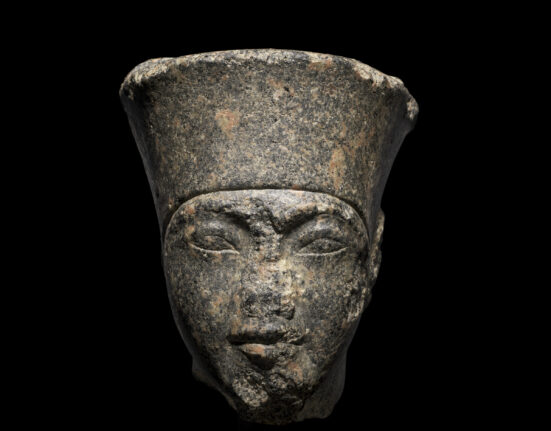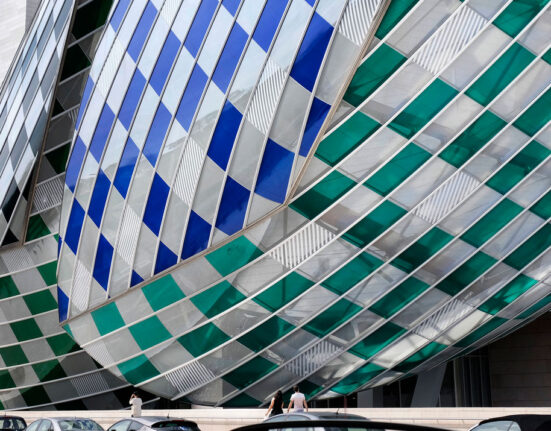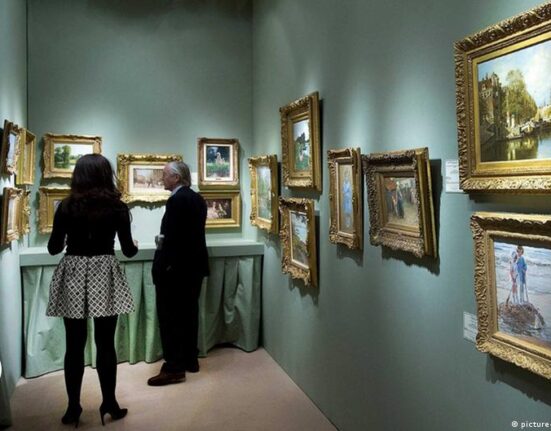Art fairs used to be principally trade shows for specialist audiences, and few were more established and exclusive than the European Fine Art Fair — which each March lures museum directors and deep-pocketed connoisseurs to Maastricht, in the southern tip of the Netherlands. Now, fairs constitute a year-round global festival of commerce, chitchat and champagne sponsorship, and Tefaf has established a pair of smaller New York spinoffs: a fall edition focused on older art, and a spring show with a more modern orientation.
Three years in, Tefaf New York Spring has matured from an experiment into an appointment, with offerings of notably higher quality than most of its New York competitors. Though galleries of modern art dominate this spring jamboree, it’s also accented with furniture dealers, specialists in antiquities and a few lavish jewelers flogging all manner of drop earrings and diadems. Tefaf is also unique among art fairs for its rigorous vetting process, which involves dozens of experts combing the booths to authenticate the wares on offer.
Many dealers here have turned their booths into solo shows (Pace has filled its booth with an array by Jean Dubuffet), regional showcases (Gladstone Gallery’s all-Brazilian booth is a showstopper) or thematic mini-exhibitions. (At Sprüth Magers, all the works are by women working in a political vein in the 1980s.)
The fair runs through Tuesday; here are some highlights, whether you’re buying or browsing.
Booths 347 and 371 (Drill Hall)
David Zwirner and David Tunick, Inc.
If you’re a painter or sculptor wondering how to persuade a gallery to represent you, perhaps you might try dying? Lately the biggest galleries have jostled with one another to represent the estates of deceased artists, and last month David Zwirner has nabbed a heavyweight: Paul Klee, the splendidly cagey Swiss-German modernist and Bauhaus professor.
Zwirner is trumpeting its coup with an all-Klee booth here, full of wily small-scale watercolors like “Signs in the Field” (1935), with its joyously inscrutable cloud of glyphs, ovals and eyes. Yet the fair’s best Klee is on the booth of David Tunick, a specialist in prints and drawings, where you’ll find a knockout 1923 portrait of the soprano Lilli Lehmann, goggle-eyed and adrift in a sea of beige. Klee executed it with a unique blend of oil and watercolor, and its spare, witty lines make it appear almost as a comedic double of his imposing “Angelus Novus.”
While the art here is priced at various levels (relative to contemporary art, antiquities can seem a steal), Tefaf is decidedly not a fair for bargain hunters. Even those of us with deficient digits in our bank accounts, though, will appreciate the display of later Cubist works, with paintings by Picasso, Braque, Gris and Léger from the last years before the 1920s revival in figurative painting known as the “rappel à l’ordre,” or call to order.
An impressive still life with a guitar by Gris, painted in 1916 and seen in 2013 on the auction block, has resurfaced here: More legible and more sensuous than the puzzles of Cubism’s first years, it delineates the surfaces of a room, a table, and an instrument’s body with thousands of individual speckles.
Booth 211 (Second Floor Historic Rooms)
Luxembourg & Dayan
The bulk of Tefaf takes place in the Armory’s large Drill Hall, but many of the fair’s delights are upstairs, in the building’s lush Renaissance Revival rooms. This gallery’s rewarding presentation consists wholly of portraits, including two fine Weimar-era works: an Otto Dix painting of a fellow painter staring anxiously into the middle distance, and an even better portrait, by Dix’s less famous colleague Rudolf Schlichter, of the left-wing actress Carola Neher, her hair bobbed and her lips pursed into a nervous moue. (A Trotskyite, she would later die in a Soviet labor camp.) Both are affably displayed on free-standing easels, and kibitz with newer works by Urs Fischer, Piotr Uklanski, and Rudolf Stingel.
The fair also features Egyptian antiquities, African statuary, and — in the booth of this prominent specialist — art from indigenous North America. Here you’ll find a Tlingit animal-shaped bowl, ledger drawings from the Central Plains, and a commanding, feather-festooned Yup’ik mask, which dates to around 1900 and is attributed to an artist called Ikamrailnguq (One Without a Sled). Beneath the mask’s toothy grin is an orthogonal wind tube, while thin sticks representative of raindrops dangle from two fins. Though it now appears as a fixed sculptural masterpiece, in colonial Alaska it had more immediate uses, worn in dances to summon clement weather.
Booth 101 (first floor Historic Rooms)
Friedman Benda
One of the most important design presentations here showcases the biomorphic furniture of Wendell Castle, who created boldly sculptural chairs, benches and desks from the 1960s until his death last year. A low-slung rocking chair from 1962, carved from warmly stained oak and finished with stretched leather, looks as aerodynamic as a bobsled; a bench of stained black ash, with two swooping seats attached to intersecting cones, was made in 2015 with computer assistance.
He’s not the only furniture designer here who had an eye on technology; on the booth of the French gallery Vallois is a prototype desk from 1934, by the Art Deco designer Jacques-Émile Ruhlmann, made of the same aluminum alloy used in airplanes.







